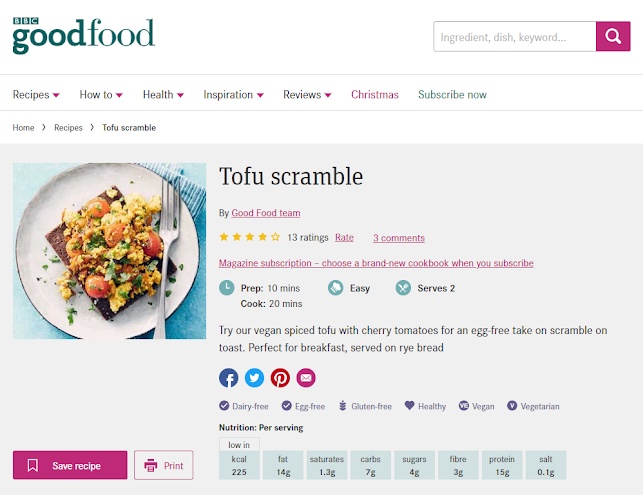
The calculation of environmental impacts from recipes remains a barrier to effective uptake of sustainable diets. In a recent project funded by Alpro, led by Dr Christian Reynolds from the Centre for Food Policy at City University London, we explored digitised recipe texts from websites in English, Dutch and German. We study recipes rather than individual ingredients because this is how people typically think about environmental impact and diet.
Recipes are hard to process because they use different weights and measures, and sometimes quite vague or obscure terms (e.g. "a pinch of salt", "a handful of lettuce"). Together with our project partner Text Mining Solutions, we used GATE to develop customised tools to automatically extract ingredients, quantities and units from 220,168 indexed recipes, and to match these to a food environmental database of 4500 ingredients (using the classification system FoodEx2). This database provided Land Use, GHG emissions, Eutrophying Emissions, Stress-Weighted Water Use, and Freshwater Withdrawals for each ingredient.
Nutrition information was sourced from the USDA FoodData Central (McKillop et al., 2021) and McCance and Widdowson's Composition of Foods Integrated Database (Public Health England, 2015). Environmental and Nutrition information was matched to two classification systems (FoodEx2, containing 4,500 ingredients, and USDA Nutrient Database, containing 2,484 ingredients). This allowed us to calculate these impacts at the mean, 5% and 95% confidence level per recipe and per portion, enabling us to explore the environmental impacts of vegan, vegetarian and non-vegetarian (omnivore) recipes if we were to cook these recipes using contemporary ingredients.
To validate the tool, we manually calculated the impacts of 50 recipes from 4 websites: BBC Good Food, Albert Heijn/Allerhande, AllRecipes.com and Kochbar, and compared these with the results from our tool.
We created a website where you can enter a recipe and get back the calculation for the recipe and per portion (with confidence intervals). The image below shows a sample screenshot.
We presented some of our findings as a poster at the Livestock, Environment and People (LEAP) conference in December 2021. You can find more examples of our analysis and results there.
It's interesting to see how the recipes from the different countries, as well as recipes with different protein sources, lead to different median CO2 footprints. Below we see a chart showing the median GHGE per portion in recipes from different protein sources (e.g. those containing beef, those containing tofu) in omnivore, vegetarian, and vegan recipes. Unsurprisingly, the dishes containing meat have higher GHGE values on the whole, though we do find variations within individual recipes. We were particularly excited to find a recipe for chocolate cake that "beat" a salad in terms of low GHGE!

When we compared the different datasets (depicting recipes from different European countries) in terms of median GHGE per protein source, we found that Kochbar (German) recipes typically fared the worst, followed by the BBC Good Food recipes (British), and Albert Heijn (Dutch) faring much better.
The work is now continuing with the development of a dashboard enabling additional visualisations and further analysis to be produced.

 One of the useful features of GATE is that documents can be loaded directly form the web as well as from local files. This is specifically useful for pages which update frequently which you might want to process repeatedly. While using this feature recently we came across some pages that refused to load correctly. The page loaded fine in a web browser but returned a 403 unauthorised response when accessed via GATE.
One of the useful features of GATE is that documents can be loaded directly form the web as well as from local files. This is specifically useful for pages which update frequently which you might want to process repeatedly. While using this feature recently we came across some pages that refused to load correctly. The page loaded fine in a web browser but returned a 403 unauthorised response when accessed via GATE.
